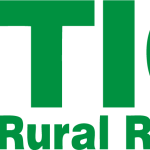
As a reminder, you need to plan ahead to plant alfalfa in regards to herbicide rotation restrictions and soil pH management, so read my blog post from Fall of 2023 at https://croptechcafe.org/plan-ahead-to-plant-alfalfa/. After corn and soybeans, alfalfa is the most grown crop in southeast Nebraska. Based on satellite imagery and crop reflectance, USDA CropScape estimated there was approximately 17,047 acres of alfalfa growing in the summer of 2023 in Gage, Jefferson, and Saline counties. Assuming farmers maintain alfalfa stands for 5 to 7 years, there are about 3,000 new alfalfa acres seeded each year.
In southeast Nebraska, late summer and early spring are the two target seeding windows for alfalfa. Late summer after winter wheat from August 15 to September 1 works well when we have good soil moisture, and it has less weed challenges than with spring seeding. The recommended spring seeding window of April 1 to May 15. Alfalfa seedlings are very cold-tolerant, so there is very little risk when seeding after April 1.
Use inoculated, fungicide-treated alfalfa seed at rates of 12 to 15 pounds per acre in rainfed fields and 15 to 20 pounds per acre in irrigated fields. There are some advantages to the higher end of these seeding rate recommendations when conditions are not perfect. Higher spring seeding rates can help increase canopy cover and competitiveness against weeds. However, over-seeding is costly, and alfalfa stands will self-thin down to a similar number of plants per acre by the end of the second year whether seeded at 15 pounds verses 20 pounds per acre. In general, I do not recommend seeding companion oats at 20 lbs/acre other than on tilled highly erodible soils or if really need extra tonnage during the first year.
Seed alfalfa into a firm seedbed at ¼ to ½ inch deep in fine-texture soils that make up most fields in southeast Nebraska. In sandier soils like Jansen and Meadin loam in west central Jefferson County, seeding at ½ to ¾ inch deep should be considered. No-till drilling alfalfa at 8-inch row spacing or narrower is recommended.
With no-till alfalfa, pre-plant incorporated herbicides are not an option. Therefore, start clean and burn down emerged weeds. Most small weeds can be controlled with a timely post-emergence herbicide in new seeding alfalfa fields. For more information on weed control options in alfalfa, purchase the 2024 UNL Guide for Weed, Disease, and Insect Management in Nebraska as a digital or hard copy through the UNL Market Place (https://marketplace.unl.edu/default/ec130.html). This guide offers valuable information on weed, disease, and insect management for alfalfa and other crops.
For more information about seeding alfalfa download our NebGuide G2247: Seeding Alfalfa (https://extensionpublications.unl.edu/assets/pdf/g2247.pdf). For inquiries about these resources and other agronomic resources and programs from Nebraska Extension, contact me at or 402-821-1722. Know your crop, know your tech, know your bottom line at croptechcafe.org


